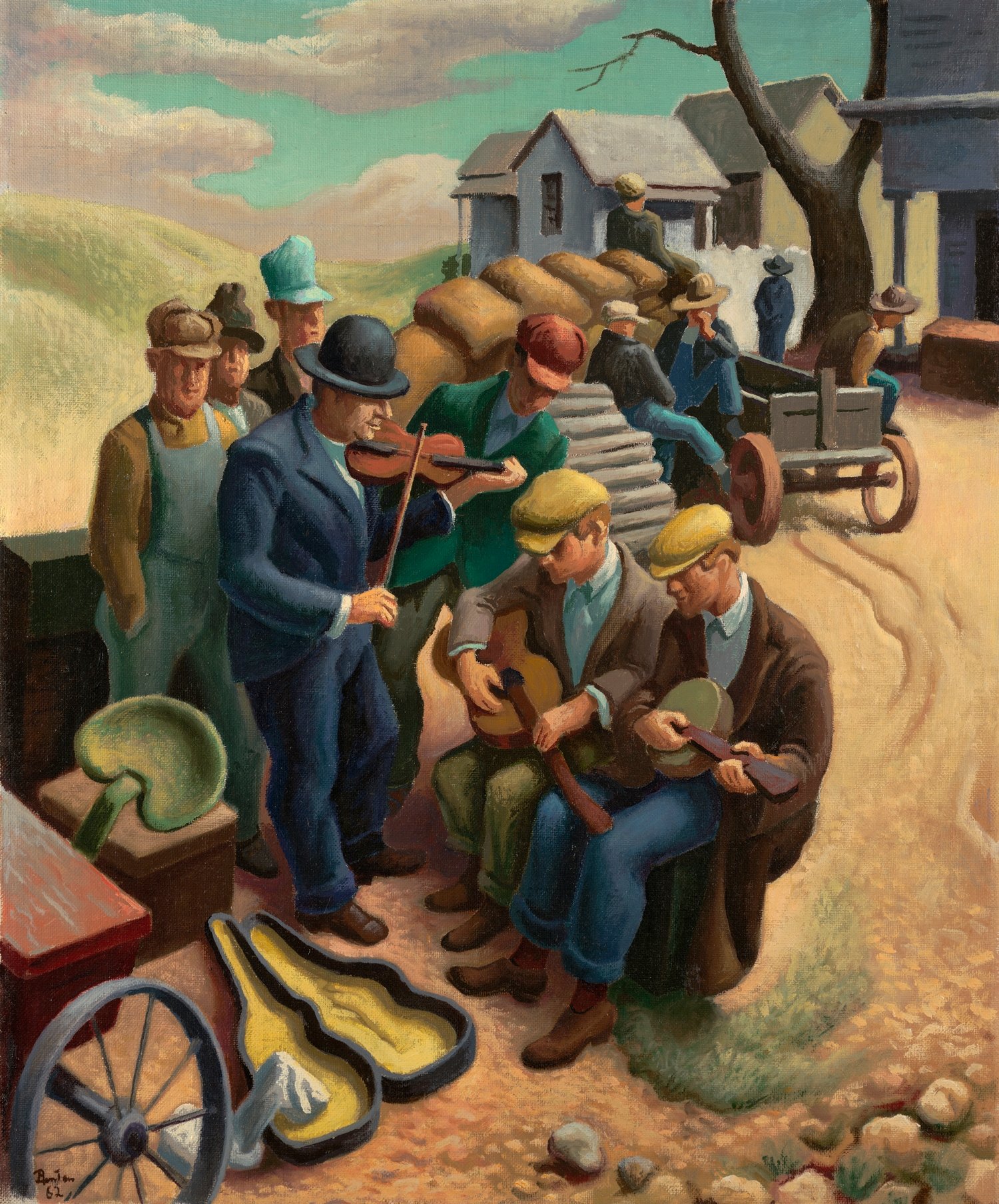
A legal battle is brewing over the estate of painter Thomas Hart Benton (1889–1975), a key figure in the American Regionalist movement.
The case pits the artist’s daughter, Jessie Benton, and her three children, against Kansas City’s UMB Bank, run by the Kemper family, prominent art patrons who lend their name to the city’s Kemper Museum of Contemporary Art.
In a lawsuit filed Tuesday in the Circuit Court of Jackson County, Missouri, the Benton heirs accused the bank of mismanaging the artist’s multimillion-dollar estate, selling work for below market value, often in batches without identifying individual works. “UMB’s actions and failures described herein have resulted in an excess of millions of dollars in damages to the Benton Trusts,” reads the complaint.
Benton’s heirs want to see the bank removed as trustee and are demanding payment of $1 million, plus damages and legal fees. “We’re asking the bank to make up for the value that they lost on those sales,” said the family’s lawyer, Andrew Boyda of Missouri’s Langdon & Emison, to Artnet News. “The family and Jessie are obviously devastated. They trusted UMB bank to care for the estate and take the appropriate action needed, and that trust was broken.”
Thomas Hart Benton, T.P. and Jake (1938). Courtesy of Sotheby’s New York.
“Despite our extensive efforts to address [the] issues presented, the Benton family and its representatives have chosen to resolve alleged issues through litigation,” UMB said in a statement provided to the Wall Street Journal. “We take our role as a trustee for art and other assets seriously, and will directly address and defend the misguided allegations made in the lawsuit.”
For an artist’s estate to be managed by a commercial bank, rather than his or her family, an art gallery, or a dedicated artist’s foundation, is unusual. But UMB’s former chairman, R. Crosby Kemper Jr., who died in 2014, was a major collector of Benton’s work. (He and his wife Bebe also co-founded the Kemper Museum.) His son, Mariner Kemper, has run the bank since 2004.
Before Benton died, he and his wife, Rita, both set up trusts with UMB with a now-deceased lawyer serving as trustee. Their two children, Jessie, now 80, and T.P., who died in 2010, were the trusts’ beneficiaries.
When Rita died just three months after her husband, Jessie, mother to three young children, didn’t question the financial arrangements. But in 2015, during a celebration of Benton at the Nelson-Atkins Museum of Art, she visited the estate bank vault and was disturbed by what she saw. “The collection had been moved from the climate controlled vault to a safety deposit box vault,” said Boyda. “She thought, ‘where are all the pieces at?'”
The Benton family claims they were charged hundreds of thousands of dollars to build climate-controlled facilities for the artist’s work, only to have the works stored elsewhere. The complaint alleges that for 40 years, the bank did not provide the family with regular appraisals of the estate’s assets. When pressed, the bank would not provide a list of their holdings of Benton’s work, or information about what pieces had been sold.
Thomas Hart Benton and his daughter, Jessie Benton. Photo courtesy of Jessie Benton.
“Likely over one hundred irreplaceable pieces of art are unaccounted for and lost from the Benton Trusts because of UMB,” the complaint contends.
Desert Artist, a Benton painting his family says was willed by the artist to a foundation linked to the Nelson-Atkins Museum of Art, instead wound up at the Kemper, where it is catalogued as a gift of Bebe and Crosby Kemper. As of press time, UBM had not responded to inquiries from Artnet News.
A master of figurative painting, Benton depicted the everyday lives of working-class Americans, from farmers to factory workers. His work can be found in the collections of the Metropolitan Museum of Art in New York, the Art Institute of Chicago, and the National Gallery of Art in Washington, DC, among other institutions.
According to the Artnet Price Database, the auction record for a work by Benton is $4.89 million, set in 2015 at Christie’s New York with the sale of Ozark Autumn. It’s one of 15 pieces by Benton to fetch more than $1 million at auction.